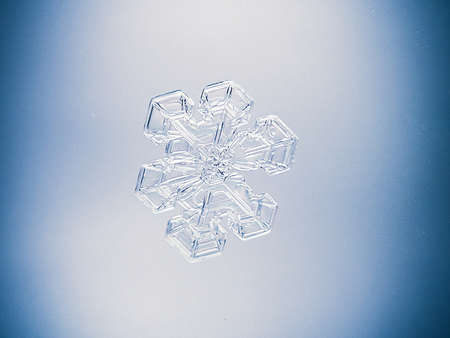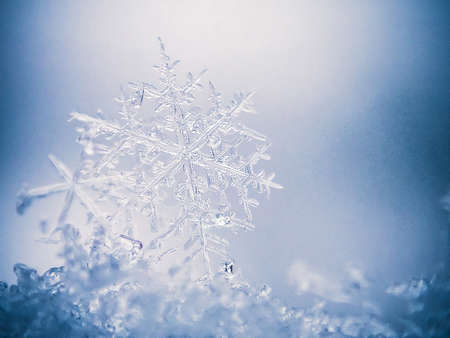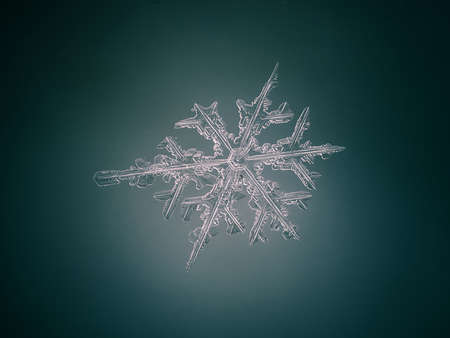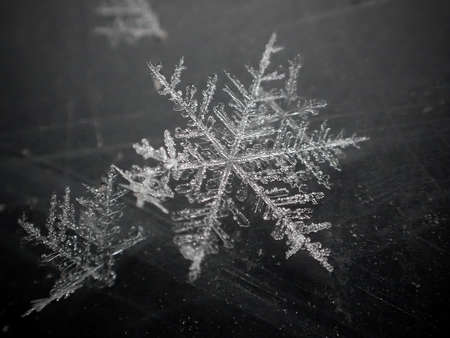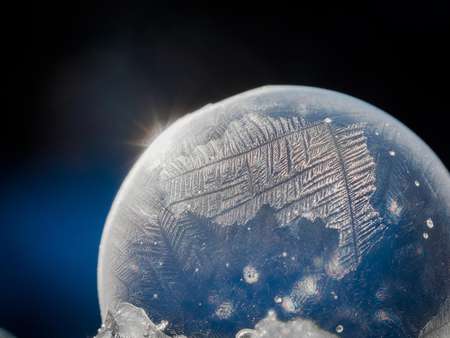Snowflakes are amazing – each one unique, each one delicate, each one intricate. To the human eye, these differences are hardly noticeable. However, with the use of a macro lens or camera, you can capture the characteristics of a snowflake with unparalleled detail.
Using the TOUGH
- Using the Super Macro Mode found in the TG-4, TG-5 and TG-6 tough cameras is my favorite way to photograph snowflakes. In fact, by using the following method, I don’t even get cold! Make sure to catch the snowflakes as soon as they have fallen to prevent melting.
- Find a window to which the snowflakes have attached. This generally happens while the snow is falling, but it can also happen if there is wind blowing the flakes around.
- Set the camera to Super Macro Mode. You can also use the focus stacking feature in order to get a sharper image.
- Push the “T” to zoom in as close as you can.
- Put your camera directly up against the window. Double-pane windows create the ideal distance from the camera to the snowflake.
- Search for the perfect snowflake. Getting the snowflake in the frame can be a challenge, but be patient. As with all macro work, it takes some time to get the hang of it.
- Snap the picture when you’ve found your flake and the camera has achieved autofocus. The best part about using the window is you don’t suffer from camera shake. The window is great for stabilizing your camera. In fact, I ended up with so many good images that picking the best was a challenge.
- After downloading the images to the computer, edit them to fit your style. I added some additional color to my images to make the snowflakes pop, but that’s not necessary. Feel free to edit them any way your heart desires.
Using a PEN or OM-D camera
- Although I still prefer to use a window to capture snowflakes, you can also use a blanket or other piece of fabric that has been left in the cold to prevent too-fast melting. I like using darker material so the snowflakes stand out against it.
- Make sure your lighting is adequate and that you have a tripod. Nothing ruins a macro shot like inferior lighting or out-of-focus subject. Need extra light? Add an external flash like the FL-600 R either on- or off-camera to create the desired effect.
- For best results, use the M.Zuiko 60mm F2.8 Macro Lens. Set the lens to the 1:1 ratio (35mm equiv). Don’t have the 60mm macro? Try using the M.Zuiko 12-50mm lens’ macro mode or even the MCON-P02 macro lens adapter.
- Find a single snowflake that can be isolated as the subject.
- Use the LCD screen to compose the image and then snap the shutter.
- Use one of Olympus’ creative Art Filters (available in current Olympus cameras as well as the O.I.Share App) to make a truly unique image or download the image to the computer for editing.
Related Tip:
4 Easy Ways to Photograph Frost
Olympus Visionary Laura Hicks covers her methods for capturing frost on a variety of surfaces.
ABOUT LAURA HICKS
Web: laurahicksphotography.com
Facebook: fb.com/LauraHicksOlympusTrailblazer
Laura Hicks is a professional portrait photographer with a personal passion for macro photography. Throughout her career, she has had the privilege of photographing hundreds of weddings and thousands of portrait sessions, and of being the official photographer for “Extreme Makeover: Home Edition” filmed in West Chester, Ohio.
